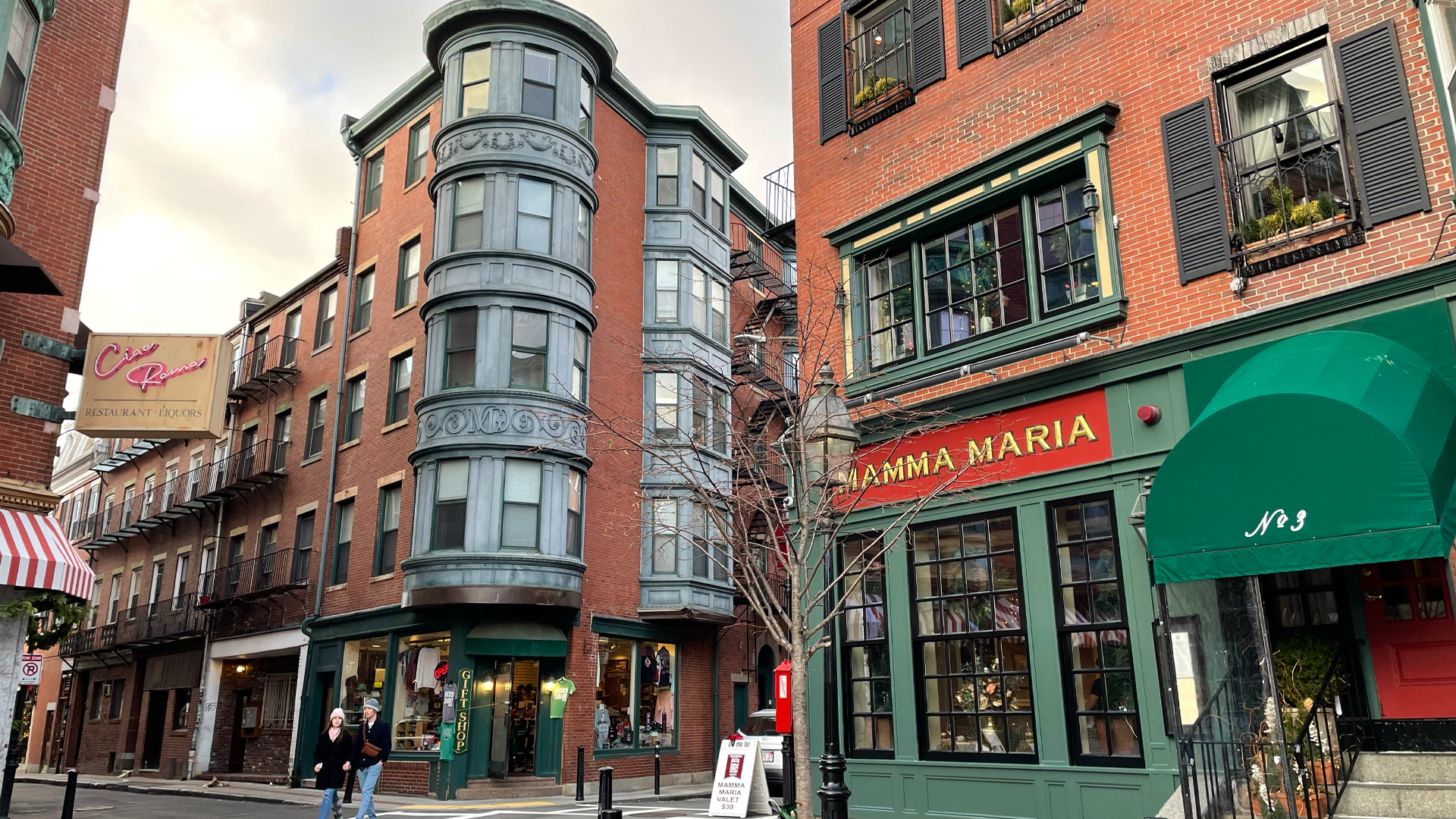Boston’s Little Italy, also known as the North End, is located a few steps away from the city’s scenic harbor. It is a quaint neighborhood, a one-square-mile area bisected by Hanover Street, home to dozens of restaurants, bakeries, coffee shops, and novelty stores. The neighborhood is characterized by squat, brick buildings and narrow, winding streets. When eating al fresco on a warm summer evening it is not hard to pretend you’ve been transported to some small, Italian town.
Bosco Diecidue, 66, has lived in the North End his whole life, as have his parents and his grandparents on both sides, who were immigrants from Sciacca, Sicily. “I’m born, raised, and never left. I’m still here,” laughs Diecidue. “I moved 150 yards from when I was a kid to where I live now. This is home.”
Although the neighborhood has been commercialized over the years and has lost the majority of its Italian residents, for those who still call it home it is unique, a standout amongst the dozens of other Little Italies across the country.
History of The North End
Although the neighborhood is known for being an enclave for Italian immigrants, it was once also home to the Irish, Russian Jews, and Portuguese. The area’s proximity to the water, and by default transatlantic commerce and travel, made it the perfect place for immigrants to settle from various parts of Europe.
In the early to mid-19th century, Irish immigrants made up the majority of the North End’s residents. By the 1860s, Russian and Polish Jews and Italians began immigrating into the neighborhood. The first Italian arrivals occurred in the 1860s and were mainly northern Italian immigrants from Genoa. A few years later, southern Italians from regions such as Sicily, Calabria, and Campania followed.
Italian immigration and presence in the neighborhood peaked at the turn of the 20th century as the Jewish population moved out to Boston’s South and West Ends. By 1920, Italian immigrants made up approximately 90 percent of the neighborhood’s population and owned a large share of the area’s business and residential properties. The North End’s population began to decline in the 1930s due to the United States' restrictive immigration quotas. By the 1970s, the neighborhood and its surrounding area caught the eyes of investors who funded the construction of luxury developments. The increasing cost of living forced many long-term, older residents to abandon their family homes in favor of more cost-effective residences outside of the city.
Today, the North End is one of Boston's most iconic and popular neighborhoods. Although there are few remaining residents of Italian descent, the neighborhood’s ethnic character and history persist in its numerous Italian restaurants, markets, and celebrations. “The percentage of the [Italian] people that are here still take pride in what we have,” says Diecidue.
Eat and Drink
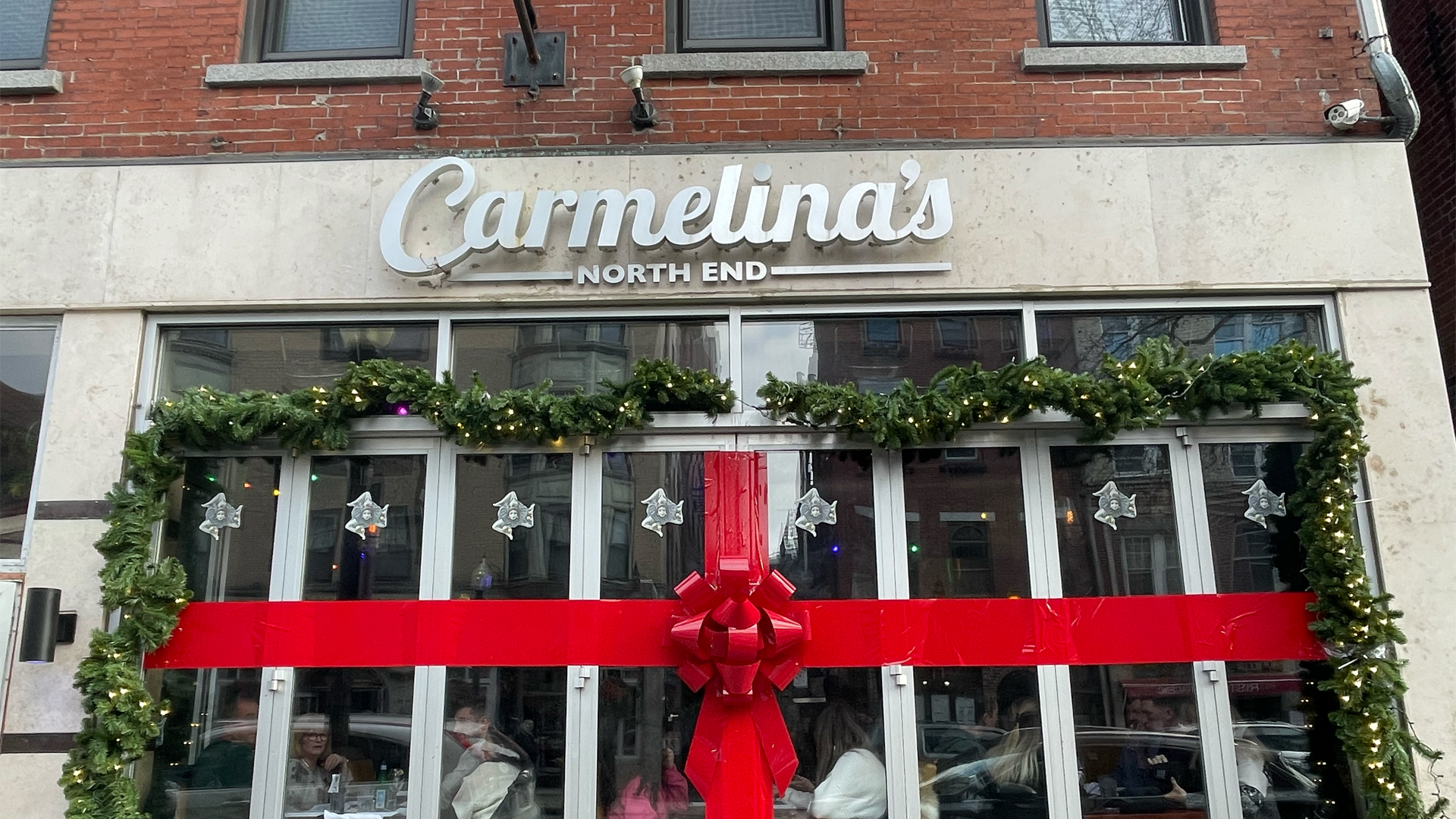
(Photo Credit: Asia London Palomba)
Carmelina’s on Hanover Street is owned by Chef Damien Di Paola, a long-time North Ender whose parents opened Caffe Dello Sport, a sports-themed coffee shop, over 40 years ago further down on Hanover Street. Carmelina’s serves traditional Sicilian comfort food with a subtle Mediterranean twist, like their Pesce Pistachio, a line caught Icelandic cod with a garlic and pistachio crust and a deep blood orange-saffron sauce, or their Bronx Tale, rigatoni tossed in a simple tomato sauce with meatballs and sulmona sausage. In 2020, it was recognized in Yelp’s Top 100 Places to Eat, a list honoring the top-rated eateries in the United States.
If you want a quick slice of pizza, Galleria Umberto, also on Hanover Street, is a no-frills, cash-only pizzeria selling Sicilian-style pizza, arancini, and calzones. They stay open until they sell out, which is often by 2 p.m., so make sure to get there just as it opens at 11 a.m.
Trattoria il Panino, on Parmenter Street, is one of the restaurants in the North End where a vast majority of the servers are from Italy. Owned and operated by Frank DePasquale – a Neopolitan businessman who owns several other restaurants in the neighborhood– Il Panino offers more hearty, traditional meals in an intimate and spacious setting. One of their more popular dishes is their wild porcini stuffed ravioli, tossed in black truffle cream.
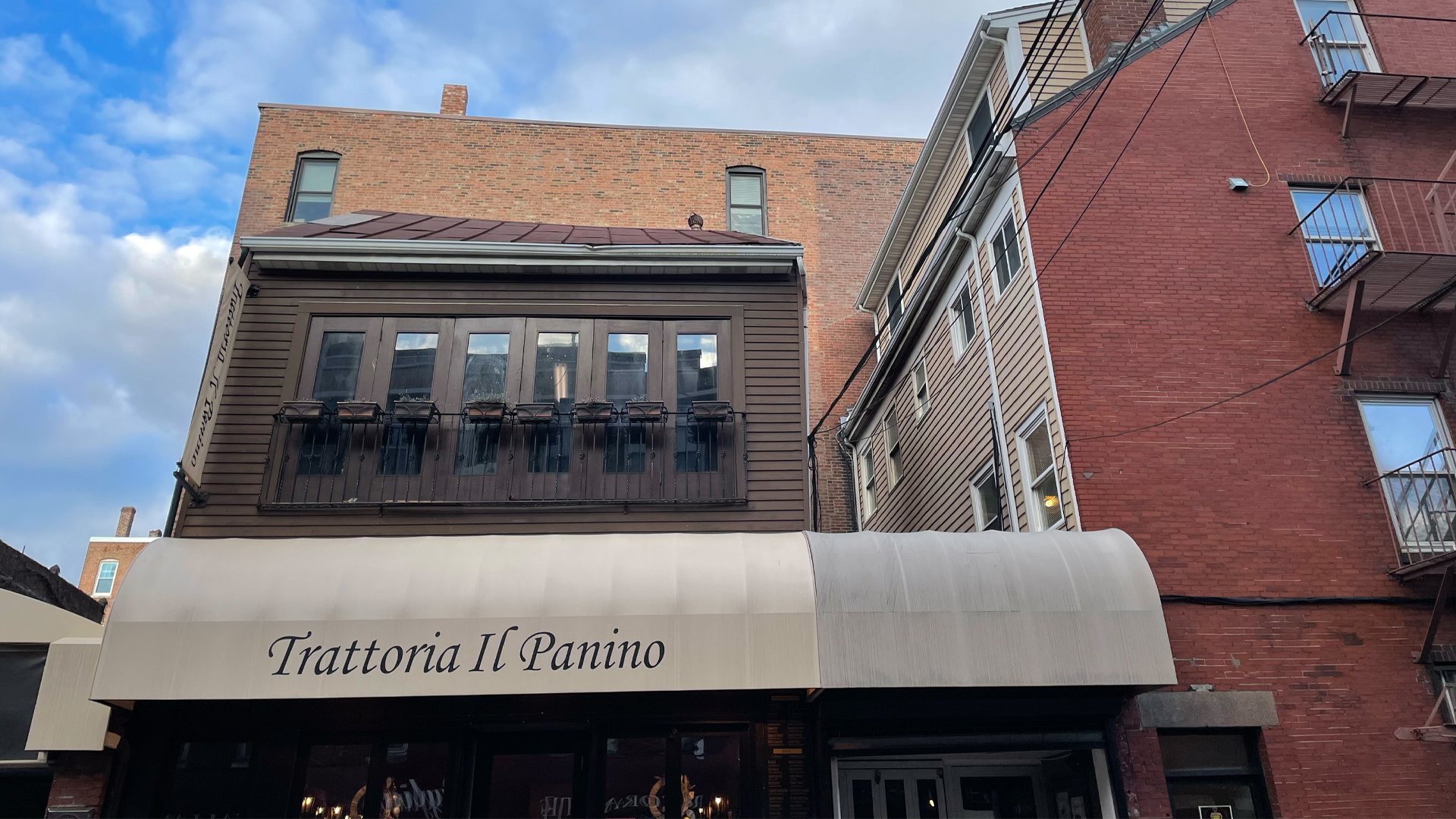
(Photo Credit: Asia London Palomba)
Mare, on Hanover and Mechanic Streets, is one of the neighborhood's top destinations for seafood. “Being from Sciacca, I love anything to do with fish,” says Diecidue. “Scallop, lobster, clams, all of it.” Also owned by Frank DePasquale, Mare is a sleek eatery with an outdoor patio offering elevated seafood options like Truffle Crusted Tuna, or more typical Italian seafood dishes like Zuppa di Mare, a light tomato broth served with lobster, swordfish, monkfish, langostino, mussels, clams and scallops.
Parla, on Hanover Street, is one of the neighborhood’s most famous locales for cocktails. While almost all restaurants in the North End serve a variety of martinis, including espresso, pistachio, and Nutella martinis, alongside the eternally famous Aperol spritz, Parla takes a more creative approach to craft cocktails. Patrons have the chance to mix and match their own drinks, choosing between exotic flavors such as hibiscus and pink peppercorn, or leaving it up to the bartender for a surprising blend. The speakeasy-inspired locale also doubles as a restaurant for dinner and brunch.
Italian Markets

(Photo Credit: Asia London Palomba)
Although the North End is a small neighborhood, there is no shortage of Italian markets to choose from. You can grab fresh pecorino and parmigiano reggiano cheese as well as meats such as guanciale (pork jowl) at Salumeria Italiana, where many of the servers behind the counter are from Italy. You can also purchase a number of imported products such as Mulino Bianco cookies and Illy Ground Coffee. At Monica’s Mercato, you can buy a variety of imported wines and meats as well as massive Italian subs, which were rated top 15 in the United States by Mashed.com for 2022. At Polcari’s Coffee, a 1932 establishment, you can shop for dozens of varieties of Italian coffee beans, nuts, and spices, and for fresh produce and seasonal fruits you can stop by Alba Produce.
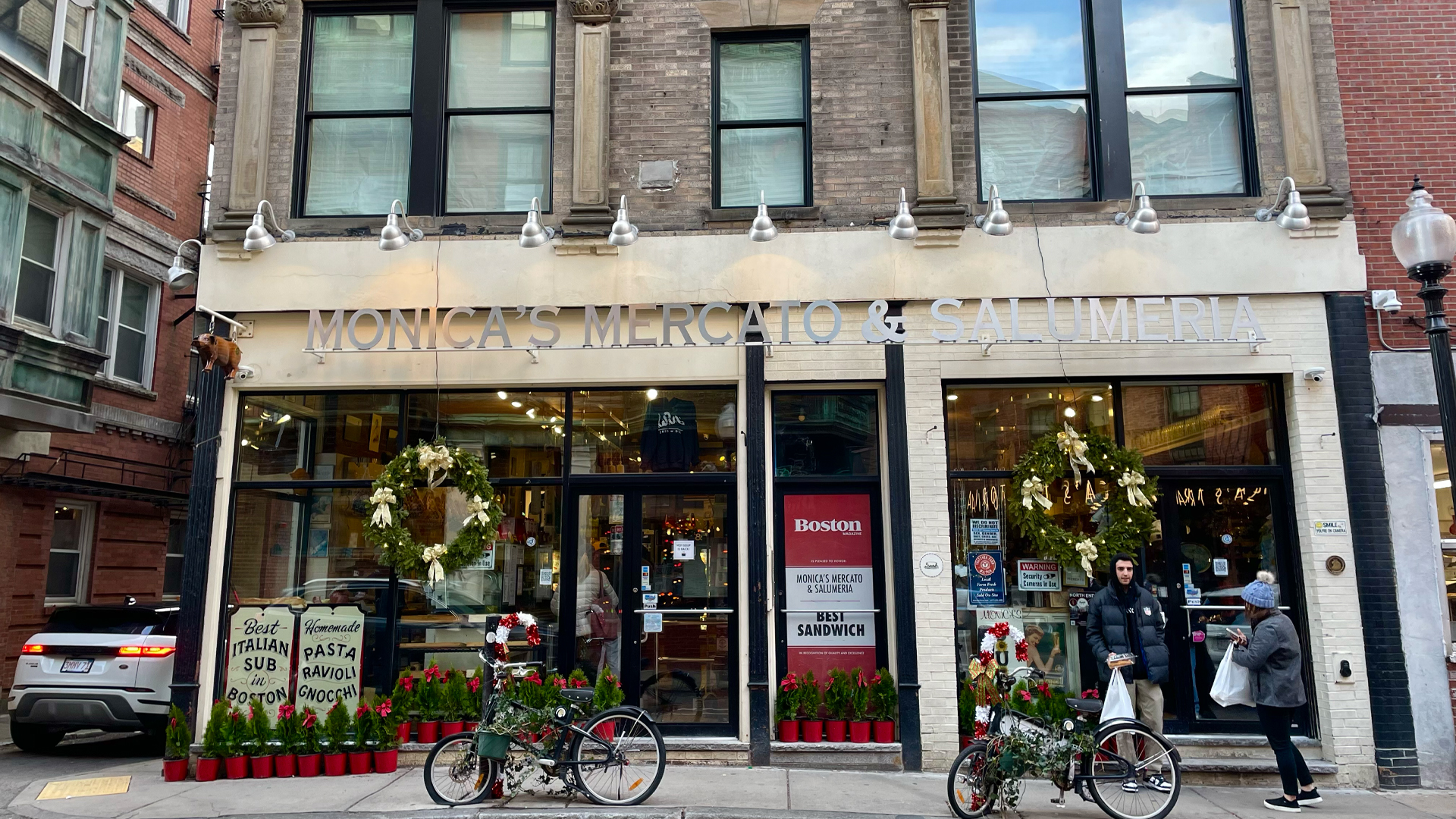
(Photo Credit: Asia London Palomba)
Experience
Built in 1873, Saint Leonard Church is the first Roman Catholic church in New England built by Italian immigrants. In its downstairs church, it houses a shrine to Saint Anthony. Sacred Heart Church has been located in North Square, America’s oldest public square (and also home to Paul Revere’s house), since 1649. The present building was built in 1883 and purchased by Italian immigrants in 1884. Both churches offer bilingual mass in English and Italian on Sunday mornings.

The Church of the Sacred Heart (Photo Credit: Asia London Palomba)
Every summer in August, the North End holds days-long celebrations, known locally as feasts, honoring saints from various parts of Italy that Italian immigrants brought over in the early 20th century. There’s Saint Agrippina from Mineo, Sicily; Madonna della Cava from Pietraperzia, Sicily; Madonna del Soccorso from Sciacca, Sicily; Saint Anthony from Avellino in Campania and Saint Lucy from Siracusa, Sicily. Each saint is celebrated for four days that are filled with entertainment, food, games, and processions. Some saints have been celebrated annually in the neighborhood for over 100 years.
“What really keeps the North End Italian is the month of August when we have the feasts,” says Diecidue, who has been part of the Madonna del Soccorso society for over 40 years. “People who moved out to the suburbs who were from the North End or whose parents were from the North End, they always come back. Each corner of the North End has its own feast.”
The feasts draw thousands of tourists each year, making August the neighborhood’s busiest month. But for the locals who grew up with the feasts, the celebrations are not just a time for fun and games, but an opportunity to pay homage to their culture and spend time with family and friends. “You can see people coming back and hugging their culture,” explains Diecidue. “They’re trying to teach their kids what is left of their culture.”
Legacy
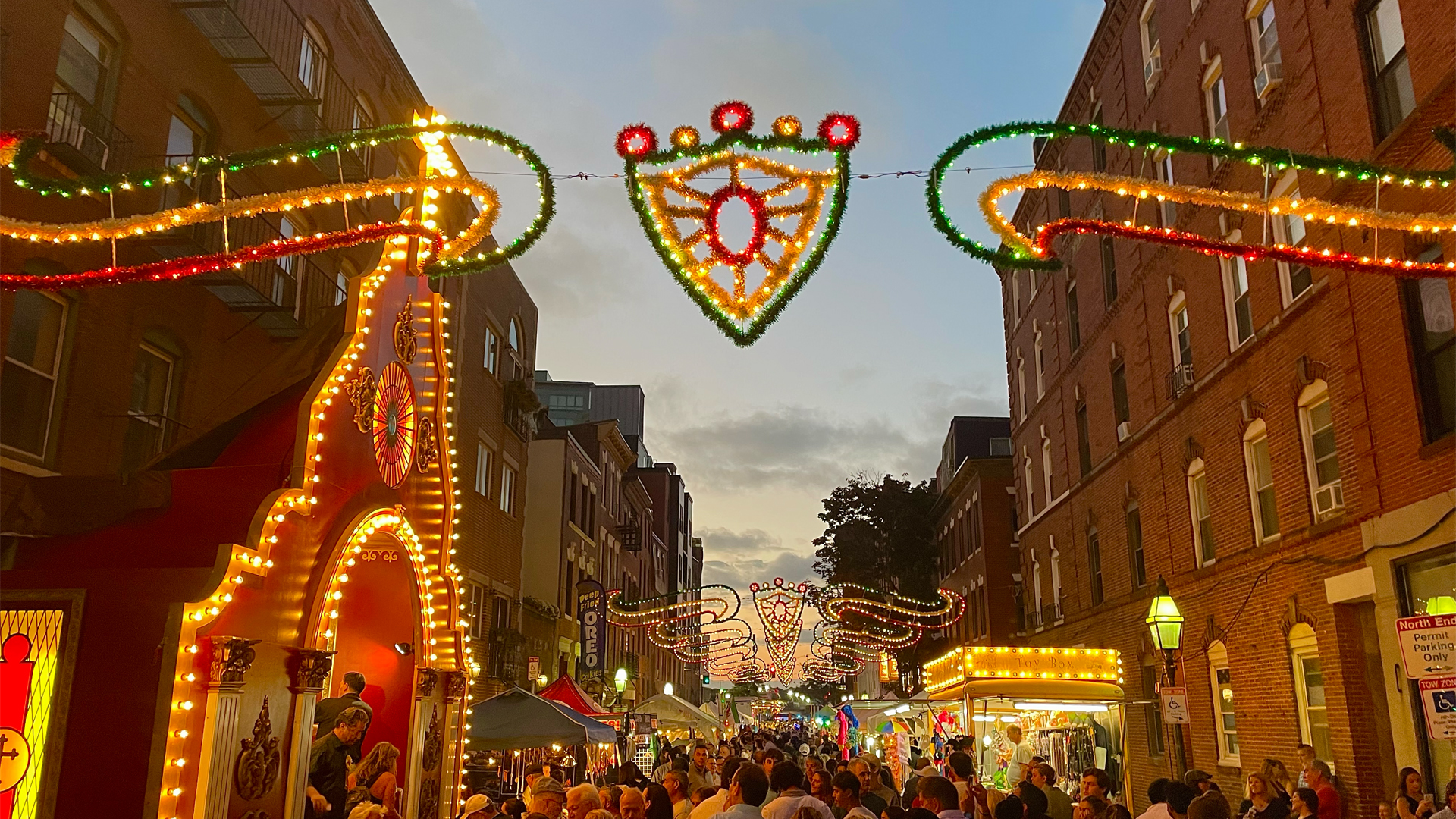
(Photo Credit: Asia London Palomba)
Although today the North End’s Italian population is small, those who are left are still fiercely proud of their heritage. Their dedication to upholding their cultural traditions is what gives the neighborhood its distinct Italian feel. Times may have changed, but the Italians of the North End continue to honor their roots with pride. “You have to go with progress, I understand it. Not that it doesn’t hurt,” says Diecidue. “Progress is good to a certain degree, but we can never forget our past. Because our past brought us here today.”
Asia London Palomba
Asia London Palomba is a trilingual freelance journalist from Rome, Italy, currently pursuing her master's in journalism at New York University (NYU). In the past, her work on culture, travel, and history has been published in The Boston Globe, Atlas Obscura, and The Christian Science Monitor. In her free time, Asia enjoys traveling home to Italy to spend time with family and friends, drinking Hugo Spritzes, and making her nonna's homemade cavatelli.

